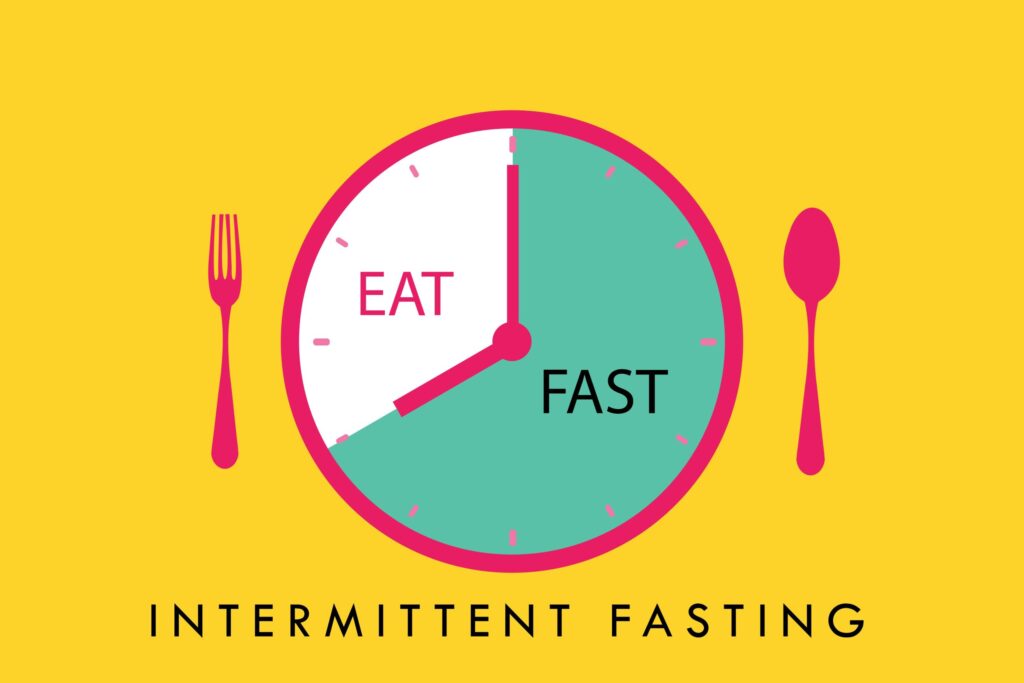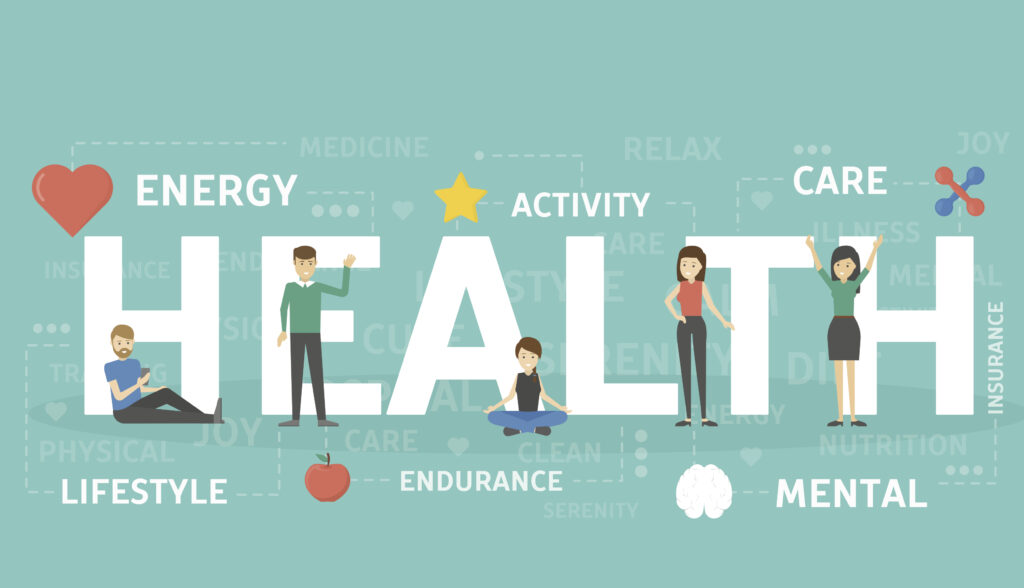health is wealth (Small Changes, Life-long Impact)

When you fast intermittently, you skip meals for a certain amount of time every day or week. (Can Intermittent Fasting Help You Focus Better?) Alternate-day fasting is one common method of intermittent fasting. One day, consume a typical diet; the following day, either fast entirely or eat a single, modest meal (less than 500 calories). 5:2 fasting.
The following are some well-liked methods for intermittent fasting:
Fasting on alternate days. One day, consume a typical diet; the following day, either fast entirely or eat a single, modest meal (less than 500 calories).
5:2 fasting.
Fast two days a week and eat a regular diet the other five days.
Time-restricted fasting every day. Eat as you normally would, but just during the eight hours of the day. For instance, have lunch at midday and dinner by eight o’clock, but skip breakfast.
According to some research, alternate-day fasting is just as successful at helping people lose weight as a standard low-calorie diet. Considering that cutting calories should aid in weight loss, that sounds reasonable.
Can you get healthier by fasting intermittently?
Being physically active and losing weight might help reduce your risk of obesity-related conditions like diabetes, sleep apnea, and some types of cancer. Intermittent fasting appears to be equally effective for these conditions as any other calorie-reduction regimen.
Can Intermittent Fasting Help You Focus Better?
According to some research, intermittent fasting may be more advantageous than other diets for lowering inflammation and treating inflammatory disorders like:
Alzheimer’s disease
Asthma and Arthritis
Multiple sclerosis
A stroke
It’s crucial to remember that while intermittent fasting may have unpleasant side effects, these often disappear within a month. Possible side effects include:
Fatigue and Hunger
Sleeplessness
Headaches and Nausea
Many people can safely fast intermittently, but not everyone can. If you’re pregnant or nursing, skipping meals might not be the greatest method to control your weight. If you suffer from diabetes, gastric reflux, kidney stones, or other illnesses
The whole body is impacted by intermittent fasting (IF), which causes a number of physiological and metabolic alterations that may have positive health effects ranging from better cellular health to increased energy metabolism.
Metabolic Health: When the body fasts, it breaks down stored fat instead of burning glucose (from carbs) to produce ketones, which can increase fat-burning and metabolic flexibility.
Can Intermittent Fasting Help You Focus Better?
This may enhance weight control and lessen the risk of type 2 diabetes by lowering blood sugar, insulin levels, and improving insulin sensitivity.
Autophagy and Cellular Repair: Autophagy, which is triggered by fasting, is a mechanism by which cells eliminate damaged components, lowering inflammation and possibly postponing cellular aging. This cellular “clean-up” could enhance cellular resilience and offer protection against chronic illnesses.
Brain Function: Brain-derived neurotrophic factor (BDNF), which promotes brain health and stress tolerance, can be produced in greater quantities during intermittent fasting. By lowering oxidative stress and fostering mitochondrial health in brain cells, it may enhance mental clarity and cognitive performance.
Hormonal Balance: Human growth hormone (HGH), which can rise up to five times during a fast, is one hormone that is impacted by fasting. This helps maintain lean muscle mass and promotes the burning of fat. Additionally, it lowers insulin, which may aid in fat mobilization and weight loss.
Digestive System: By providing the digestive system with regular pauses, intermittent fasting may lessen bloating and enhance gut health. Fasting times may promote immunological and digestive health by allowing gut flora to adjust.
Immune function and inflammation: Fasting may reduce the body’s inflammatory indicators, which are associated with a lower risk of developing chronic illnesses. Additionally, it promotes immune cell autophagy, which strengthens the immune system and may lower the risk of infection.
Heart Health: Intermittent fasting can help reduce inflammatory indicators, high blood pressure, cholesterol, triglycerides and other risk factors linked to heart disease.
Can Intermittent Fasting Help You Focus Better?
How intermittent fasting helps in increasing energy levels?

By enhancing metabolic efficiency, regulating blood sugar, and promoting cellular health, intermittent fasting can help raise energy levels.
Better Fat Utilization: When fasting, the body starts burning stored fat instead of glucose as its main energy source. Ketones are produced by this change in energy source and are an effective fuel for the body and brain. Ketones offer a consistent energy source without the crashes that come with eating carbs.
Balanced Blood Sugar: Intermittent fasting stabilizes insulin levels and avoids frequent blood sugar spikes and decreases, which can cause fatigue, by lowering the frequency of meals. A more steady supply of energy throughout the day is the result of more constant blood sugar levels.
Improved Mitochondrial Health: Fasting promotes the production of new mitochondria, which are cells’ energy sources of choice. Higher cellular energy generation from more efficient mitochondria can result in increased mental and physical vitality.
Decrease in Inflammation: It has been demonstrated that intermittent fasting reduces inflammatory indicators, which frequently result in exhaustion and poor energy. The body feels less burdened by stress and more invigorated when inflammation is reduced.
Can Intermittent Fasting Help You Focus Better?
Improved attention and Mental Clarity: The ketones generated during fasting are an extremely effective source of energy for the brain, fostering attention and mental clarity. You may feel more alert and invigorated as a result, particularly when fasting.
Better Sleep: Intermittent fasting may help some people sleep better, particularly if they avoid eating late at night. Energy levels are directly impacted by higher-quality sleep, which promotes general alertness and endurance.
Intermittent fasting can result in better and more sustained energy levels throughout the day by promoting effective energy utilization, controlling blood sugar and promoting cellular health.

Intermittent Fasting: The Ultimate Beginner’s Guide To The Intermittent Fasting Diet Lifestyle – Delay Food, Don’t Deny It – Finally Lose Weight, Burn Fat, Live A Healthier & More Productive Life (One of the best selling Book)
7% –₹1,491
M.R.P.: ₹1,596
Inclusive of all taxes
What is the best time for intermittent fasting?

Your schedule, way of living, and personal preferences will determine when intermittent fasting is most effective. Nonetheless, studies and widely accepted methods point to a number of efficient fasting windows:
Among the most popular windows for fasting are:
Eating only between 10 a.m. and 6 p.m. is known as the 16/8 technique.
Eating only between 9 a.m. and 7 p.m. is the 14/10 approach.
Other Methods
1. 16:8 Approach
(16-hour fast, 8-hour window for eating)
The window for fasting is from 8 to 12 p.m. (noon) the next day.
Hours of operation: 12 p.m. to 8 p.m.
Ideal for: People who would rather eat between lunch and evening and forgo morning. It preserves the benefits of fasting while allowing time for social or family feasts.
Can Intermittent Fasting Help You Focus Better?
2. Early Time-Restricted Feeding (eTRF)
Window for Fasting: 6 p.m. to 10 a.m. the next day
Hours of Operation: 10 a.m. to 6 p.m.
Ideal for: Those who prefer to eat earlier in the day and have morning energy peaks. Natural circadian cycles are in harmony with eTRF, which may increase metabolic advantages and boost the quality of sleep.
3. The 5:2 Method
Fasting Days: Either consume 500–600 calories or fast completely on two non-consecutive days of the week (such as Monday and Thursday).
Days of Eating: On the following five days, eat as usual.
Ideal for: People who are more flexible and find it simpler to limit their intake only twice a week as opposed to daily.
4. Alternate-day fasting
Fasting Days: Every other day, either fast or consume 500–600 calories of food.
Eating Days: On the other days, eat as usual.
Best for: Skilled fasters who wish to increase their rate of fat burning; novices may find this difficult.
5. 12:12 Method
The window for fasting is 8 p.m. to 8 a.m.
Hours of operation: 8 a.m. to 8 p.m.
Ideal for: Novices or those seeking a more delicate method. It offers a daily fasting period without significantly changing meal timings, however it is not as rigorous.
General Tips
Think About Your Lifestyle: A midday to evening meal window might be the most effective if you’re a social butterfly in the evenings.
Steer clear of late eating: Eating meals earlier in the day (say, 6 p.m.) may help with circadian rhythms and enhance the benefits of fasting, such as weight loss and improved sleep.
Can Intermittent Fasting Help You Focus Better?
What is the best exercise to lose weight while intermittent fasting?

Cardio, strength training, and flexibility exercises are the greatest ways to lose weight while intermittent fasting since they promote fat reduction, lean muscle growth, and improved metabolic health.
You can continue to fast two to three hours after your workout to maximize the effects of sprint training, which is the best type of exercise to include in your fasting time.
Sprint training is a type of high-intensity exercise that involves brief bursts of maximal effort cycling or running interspersed with rest or low-intensity recovery intervals.
It is intended to increase cardiovascular fitness, speed, and power while encouraging muscle growth and fat loss. Intervals are a common component of sprint training, when you switch between rest or low-intensity exercise and maximal sprint attempts.
Important advantages of spring training
Increased Fat Burning: Known as the “afterburn effect,” sprinting increases metabolism and burns calories long after a workout.
Muscle Toning and Growth: Sprinting helps to create lean muscle by using vast muscle groups, especially in the legs.
Better Cardiovascular Health: By making the heart and lungs work harder, it improves cardiovascular efficiency, which over time can lead to an increase in endurance.
Fast-twitch muscle fibers are developed by sprint training, which improves explosive power and speed. This is advantageous for a variety of sports and hobbies.
Connection between Sprint training and Intermittent fasting
Intermittent fasting and sprint training work well together to enhance cardiovascular fitness, metabolic health, and body composition.
The following describes their relationship and the possible advantages of combining the two:
Improved Fat Burning Intermittent Fasting: By reducing insulin levels and promoting fat mobilization, fasting improves the body’s capacity to use fat as a fuel source.
Sprint Training: By rapidly raising the body’s energy requirements and generating a calorie deficit, sprinting also encourages fat burning. Running and fasting together have the potential to improve the body’s ability to burn fat as fuel and increase fat utilization.
Can Intermittent Fasting Help You Focus Better?
Enhanced Metabolic and Muscle Performance
Intermittent Fasting: The body can grow more adept at alternating between burning fats and carbohydrates for energy by improving metabolic flexibility.
Sprint Training: Since muscle tissue burns more calories at rest, sprinting helps to create lean muscle, which further increases metabolism. Sprint exercise and intermittent fasting together can increase resting metabolic rate, which promotes fat loss and muscle maintenance.
Elevated levels of growth hormones
Intermittent Fasting: Human growth hormone (HGH), which promotes muscle preservation and fat burning, can naturally rise during a fast.
Sprint Training: It has also been demonstrated that sprinting raises HGH levels, which aid in fat metabolism, muscular maintenance, and recovery. When combined with a post-exercise protein-rich meal, the two can promote recovery and help maintain lean muscle.
Improved Focus and Mental Clarity
Intermittent Fasting: Ketone production is increased while fasting, which can enhance focus and mental clarity while frequently providing an energy boost.
Training for Sprints: Endorphins, which are released during high-intensity exercises like sprints, can enhance mood and concentration. Sprint exercising during a fast may intensify this “mental clarity effect,” which increases your level of alertness and focus all day.
Timing Advice for Intermittent Fasting Sprint Training
Work out at the conclusion of your fast: Sprint training in the final hour or so of a fast can optimize fat burning for people who are accustomed to fasted workouts. To help with recovery and energy replenishment, have a well-balanced supper that is high in complex carbohydrates and protein afterward.
Drink Plenty of Water and Electrolytes: Both running and fasting can cause dehydration, so it’s critical to drink plenty of water.
Limit the number of sprint sessions: Because of the intensity, most people find that sprinting two to three times a week during their fasting phase works best.
When done properly, sprint training plus intermittent fasting can support a leaner body and increased fitness by promoting effective fat loss, more energy, and enhanced metabolic health.